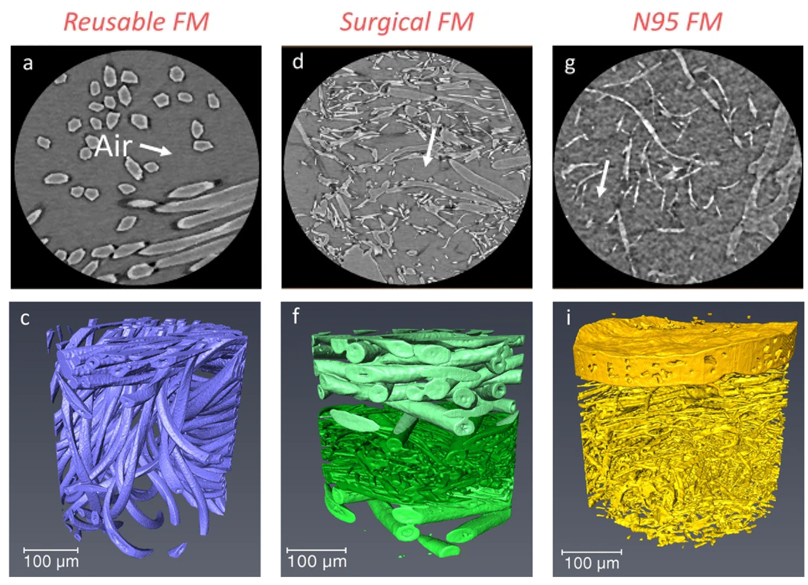Microstructure analysis and image-based modelling of face masks for COVID-19 virus protection
Until March 2021, around 120 million coronavirus disease (COVID-19) infected cases and over 2.6 million deaths have been reported worldwide. […] Recent investigations have implied that face masks help to reduce the disease transmission and therefore slow down the growth of the epidemic curve. However, there are still ongoing debates on the efficacy of wearing masks […] since there is a general lack of information relating to the material structure of commonly used face masks.

In this paper, we have studied three common types of face masks by correlative application of X-ray computed tomography (CT) and infrared (IR) thermal imaging techniques. We have used high-resolution (350 nm) microscale X-ray tomography to observe the 3D microstructures of fibres and related pore networks. Microstructural parameters have been comparatively quantified via skeletonization and pore network modelling (PNM). […] We found that a reusable mask has the best breathability and comfort whereas the N95 mask provides the best aerosol filtration. We have made the data freely available to the scientific community and to the general public in order to help develop better filtration devices and face masks and to aid wider public understanding.